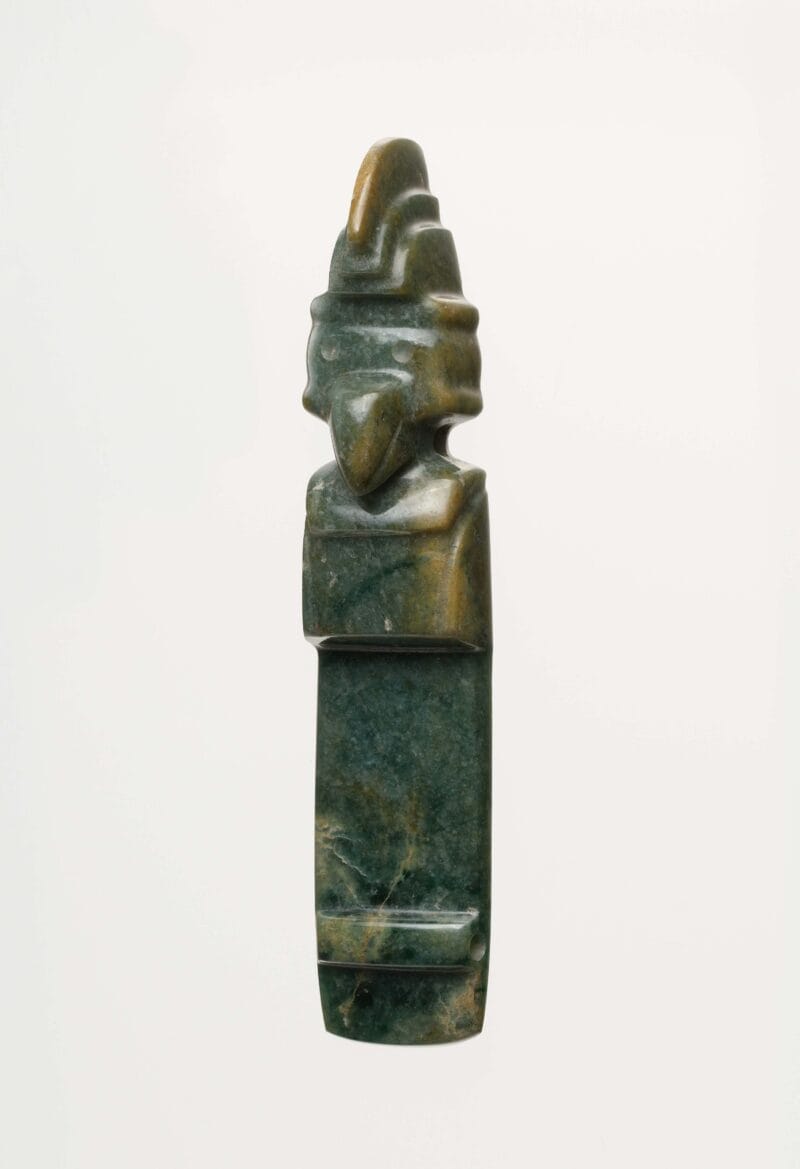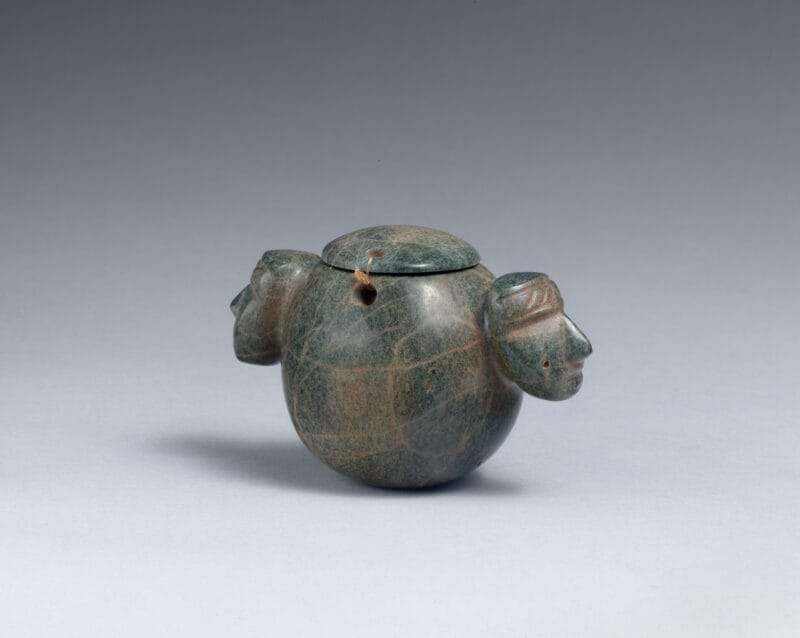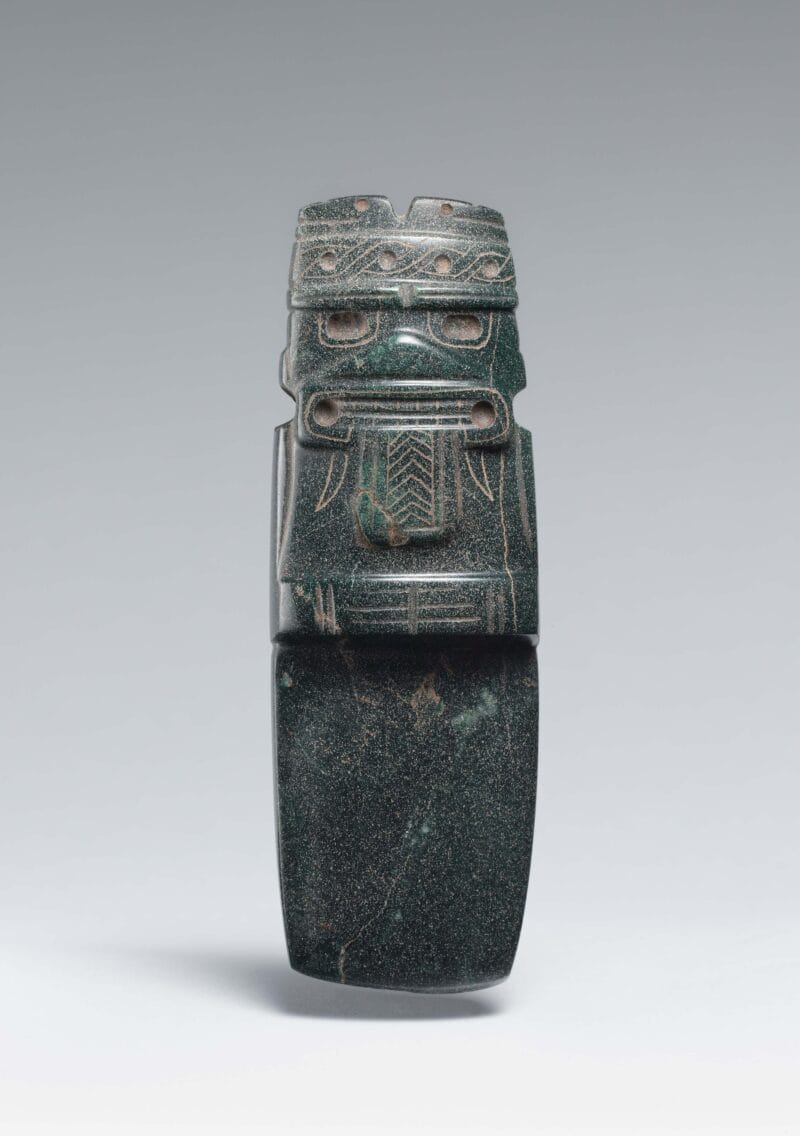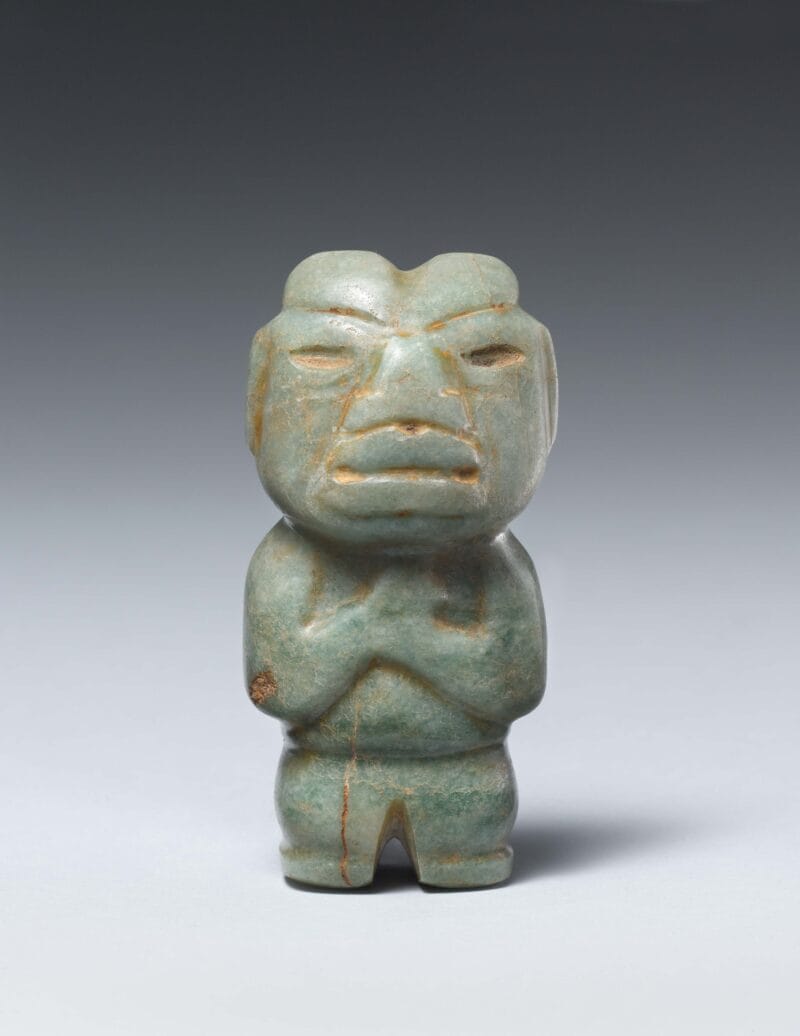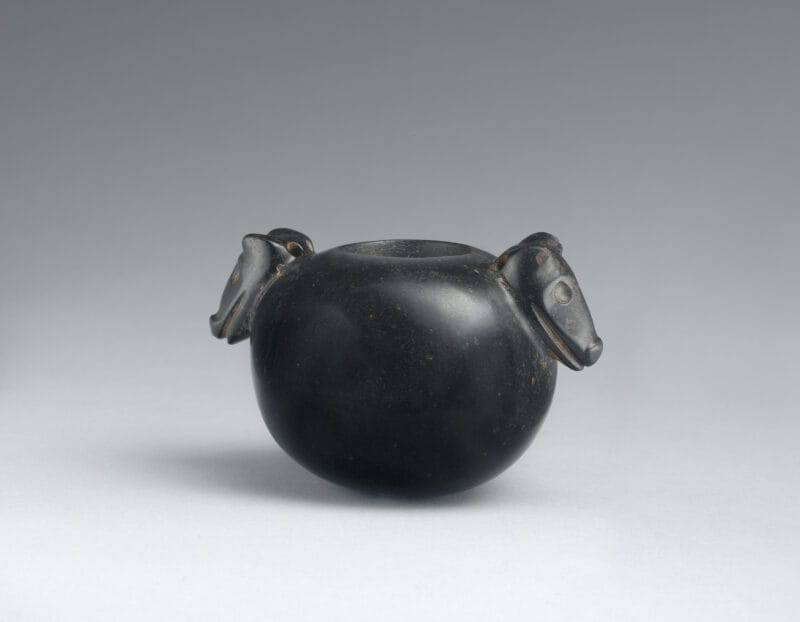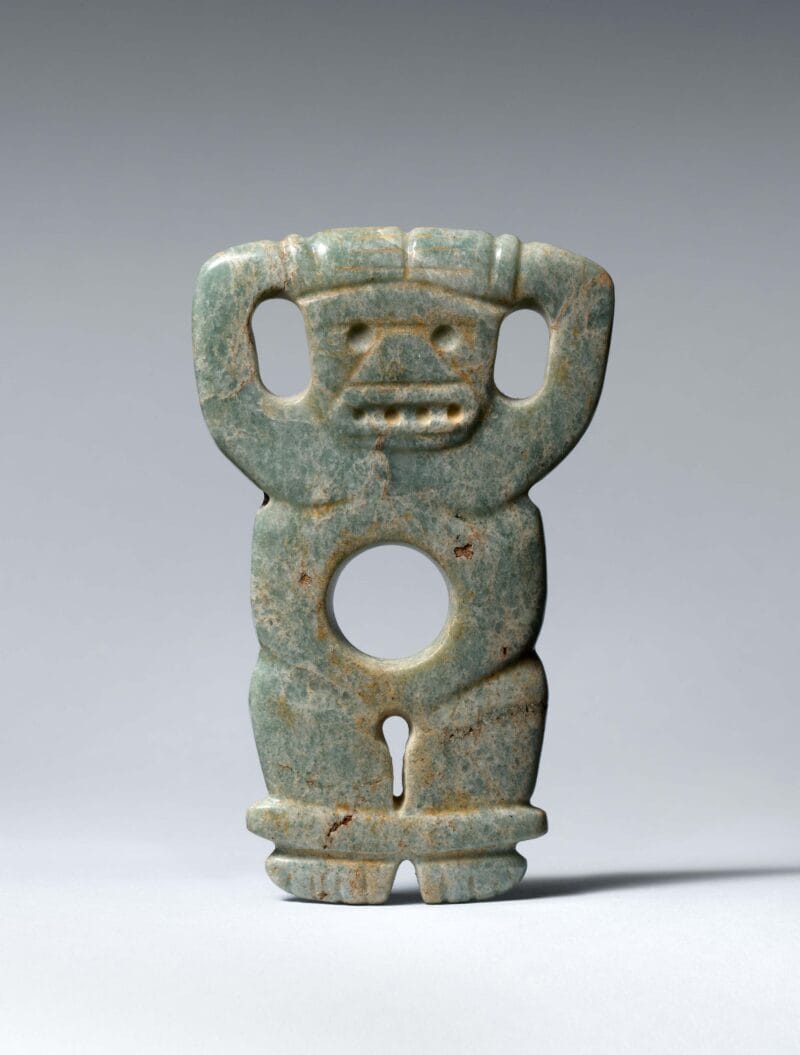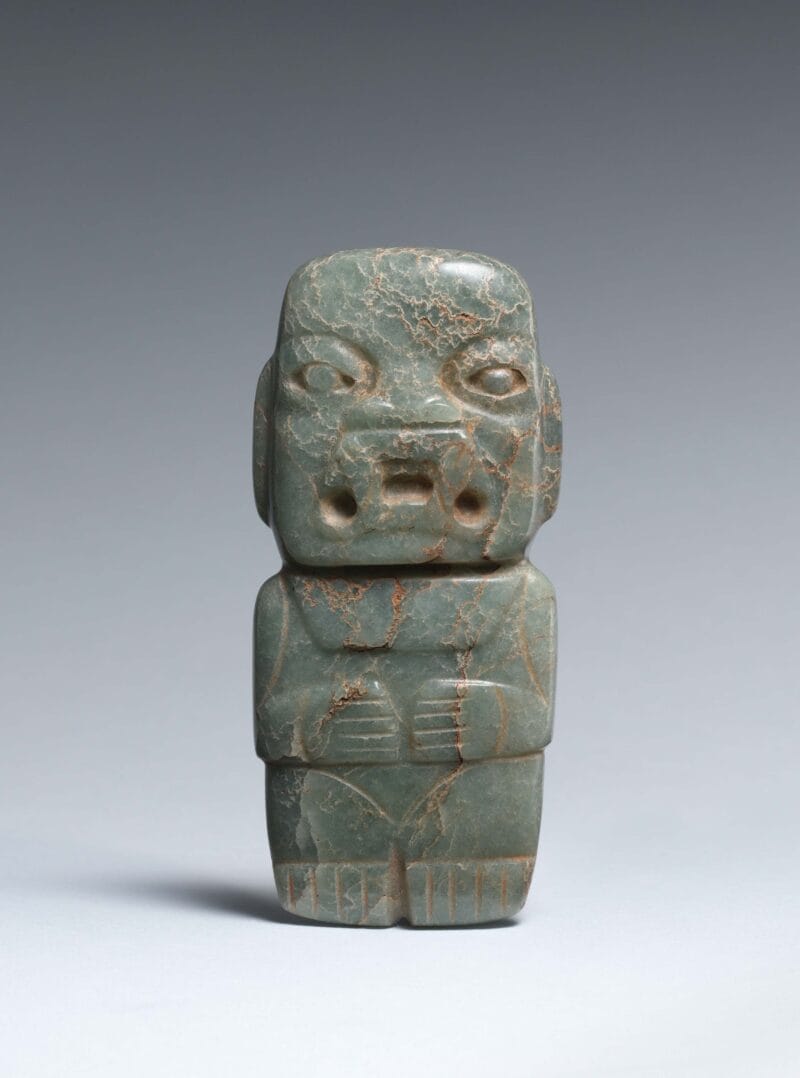
About the Object
The boat and human figure–shaped bowl seen here was carved from jade. The person is represented as lying on their stomach with legs extended backward, while the figure’s arms extend down the torso. Perhaps most striking is that, though found (and perhaps created) in Costa Rica, the figure’s face looks forward and has recognizable Olmec elements similar to Olmec face masks. These include the naturalistic features in general: the flat head, rounded-out eyes, and ears with drill holes, earrings, and earplugs.
Additional Information
Though the direct relationship between the Olmec and the pre-colonial Costa Rican traditions is still far from understood by scholars, the importance of jade in these Costa Rican traditions seems connected to the formation of early chiefdoms. These began to arise with the development of agricultural activities, which imposed a need for larger settlements and structured societal hierarchies. The leading elite of these early chiefdoms used carved jade ornaments as signs of status that would be won, traded, made, and exchanged as gifts. Many of these early Costa Rican ornamental objects were also found in burial sites, which do not seem to imply a mortuary function to these objects, but rather likely suggest the rank of the individuals buried in them.
[Throckmorton Fine Art, New York, NY];
The Jan T. and Marica Vilcek Collection, 2005-2010;
Gift to The Vilcek Foundation, 2010;

